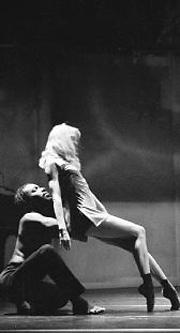IT’S A DIFFERENT perspective on globalization when Ballet Bellevue’s International Dance Festival includesBrazilian performers coming from Renton, a Bolivian dancer trained in Russia, and a Swiss choreographer running a company in Tacoma. But for all its aristocratic connections, ballet itself has a kind of mongrel heritage—with influences from Italy, France, Denmark, and Russia, to name a few—so the multiple passport entries seem appropriate.
Ballet Bellevue International Dance Festival
May 18-21 at Meydenbauer Center, Bellevue
It would be tough for a large, well-established company to mount this kind of showcase program successfully; it’s particularly challenging for a smaller group such as Ballet Bellevue. Still, by doing so, the ensemble can distinguish itself from the “big company” across the lake. Rather than trying to become a mini-Pacific Northwest Ballet, director Ronn Tice, a former PNB dancer, is taking his group in a different direction (as in their recent staging of Henry Purcell’s baroque touchstone The Fairy Queen). They will perform two of Tice’s contemporary works in the festival, including Magnesium Pieces, to the music of Frank Zappa.
Claudia Ruby from La Paz and the National Ballet of Bolivia will put her Russian background to use in an excerpt from Marius Petipa’s Don Quixote. The Richmond Ballet, a young company from Vancouver, BC, will perform, and Somla Bi Joli, a Seattle-based African dance company, may also participate. Dominique Gabella, originally from Switzerland and trained in Graham-style modern dance, created Second Stage Dance Company with a focus on older dancers who bring a richness of experience to performance. And Wade Walthall, another PNB veteran, will showcase his work created for the Evergreen City Ballet in Auburn.
ONE OF THE PROGRAM highlights should be the performance by members of Scapino Ballet Rotterdam. “Sophie’s Delight,” by Scapino artistic director Ed Wubbe, is an excerpt from Schlieman Pieces, a work about the eccentric archaeologist who uncovered what are probably the remains of the legendary city of Troy. The dance is not a literal retelling of his story, nor of the Trojan War, but its angular gestures and multijointed shapes attempt to show three-dimensional movement on a flat surface in a manner reminiscent of Greek vase painting.
A friend of mine believes it is possible to read the entire history of ballet in the way a man offers his hand to a woman onstage. From the ardent yearning of the Romantic period through the mannerly equilibrium of classicism to the more brusque encounters in much contemporary work, the onstage relationships of men to women have changed almost as radically as they have in real life. Wubbe’s choreography for “Sophie’s Delight” is firmly in the last category—it is a dance in which effort is revealed and explored.
He expands the traditional emphasis on shape until the performers are working at the absolute limit of their anatomical reach, outside the usual aesthetic boundaries. Ballet technique takes the grand tour here, picking up a contemporary dynamism and torque, and bringing it all back home again.








